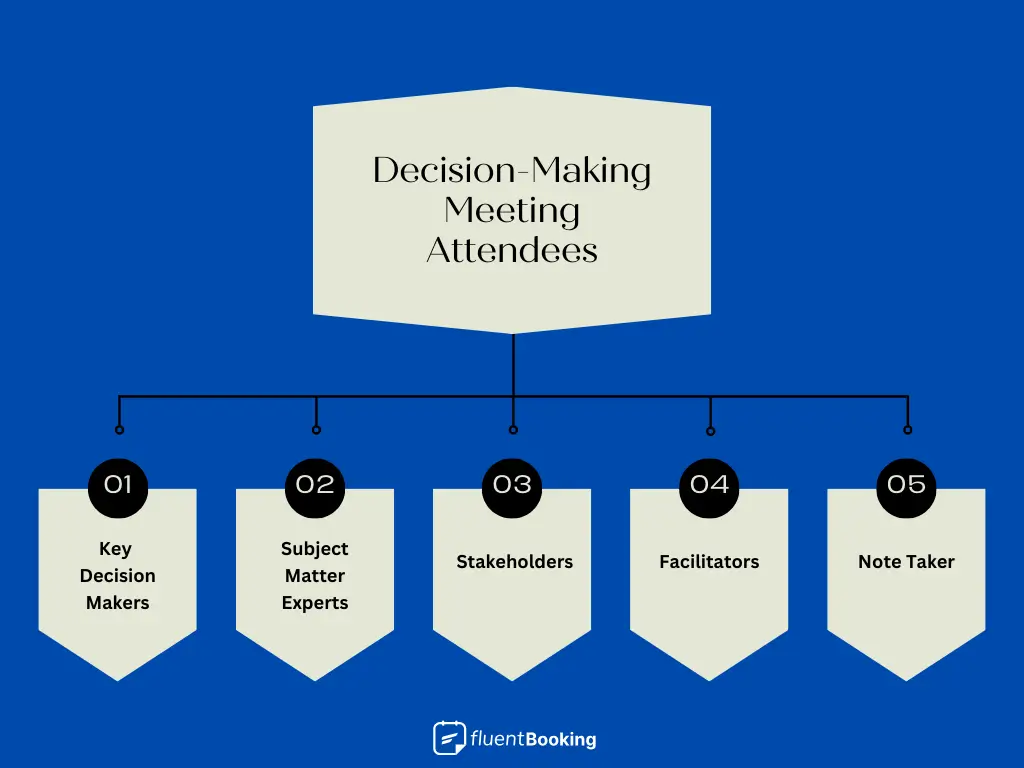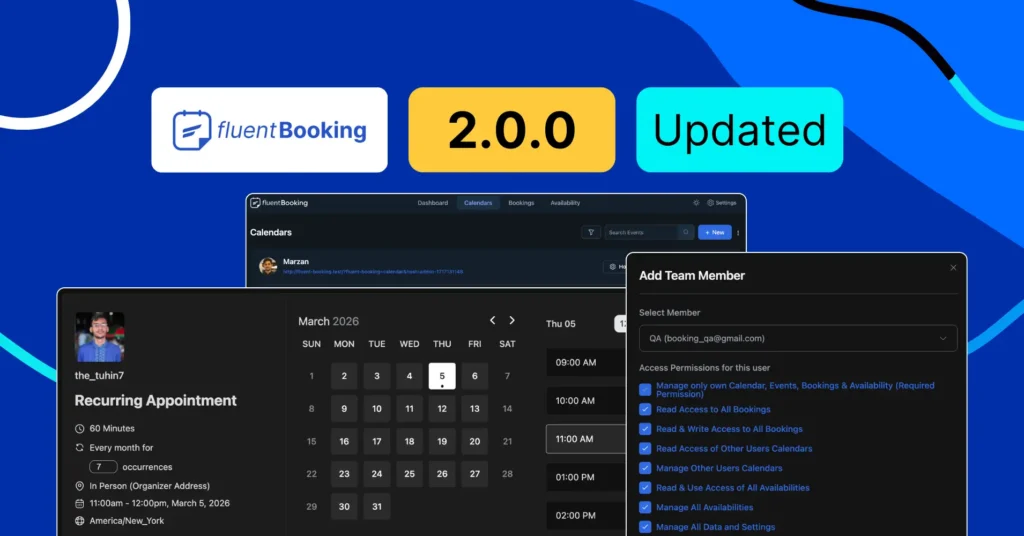
10 Proven Practices to Conduct an Impactful Decision-Making Meeting
As the sun set outside, the product team faced a tough choice: should they stick to their current marketing strategy or try something new? Each team member shared their thoughts, ideas, and concerns before finally coming to a decision.
This wasn’t just a simple discussion; it was a crucial decision-making meeting that could shape the company’s next steps and impact its success in the market.
In the role of a manager, making decisions alone can be challenging. That’s when a decision-making meeting comes in handy. They bring managers, leaders, and team members together to tackle difficult choices. By combining their expertise and viewpoints, you can collaboratively arrive at the best solution.
Keep reading to learn what it takes to hold a successful decision-making meeting and the best practices to make them more effective.
What is a Decision-Making Meeting?
A decision-making meeting is a type of meeting focused on discussions among leaders, managers, and team members, intended to resolve important ongoing matters. It involves structured processes such as sharing information, brainstorming, and weighing the pros and cons.
The goal is to reach an agreement or make informed decisions through teamwork and problem-solving. Through these meetings, options are thoroughly reviewed and actionable plans are developed for implementing decisions.
Who Should Attend a Decision-Making Meeting?
To make the best decisions, it’s important to have the right people in the room.

Here are the key participants you should include in a decision-making meeting:
- Key Decision-Makers: These are the people who have the authority to make the ultimate choice. Their role is to listen to all input and make the best decision.
- Subject-Matter Experts: These individuals have specialized knowledge about the topic. They provide valuable insights and information that help guide the decision.
- Stakeholders: These are the people who will be directly affected by the decision or have an interest in the outcome. Their perspectives ensure the decision is well-rounded and consider all impacts.
- Facilitators: They are the professionals who guide the meeting process. They ensure the discussion stays on track, is productive, and that everyone’s voice is heard.
- Note Taker: To ensure focused meetings, assign a neutral team member as a note-taker to record discussions and decisions without affecting outcomes or disclosing valuable information.
The frequency of decision-making meetings depends on the organization’s needs and the problem’s complexity. Some issues need regular meetings, while others are addressed on a need basis.
Decision-making Meetings: What are Some Examples?
Wondering when a decision-making meeting is appropriate? To help clarify, we’ve provided examples of typical scenarios where these types of meetings are necessary.
Budget Allocation Meeting
Department heads meet to decide how to distribute the company’s funds for the upcoming quarter. They present their budget needs, ensuring the funds are allocated according to the organization’s budget priorities.
Product Launch Strategy Meeting
Marketing, sales, and product development teams gather to plan a new product launch. They discuss target markets, promotional strategies, and sales goals, ensuring a coordinated and successful launch.
Customer Feedback Review Meeting
Representatives from customer service, product development, and quality assurance review recent customer feedback. They identify common issues and brainstorm solutions to improve the product or service.
Employee Wellness Decision-Making Meeting
In this meeting, HR, managers, and employee representatives discuss and plan wellness initiatives. They review current programs, gather input on new ideas, and decide on activities to promote employee health and well-being.
Quarterly Goals Alignment Meeting
Managers and team leaders gather to review and align quarterly goals. They discuss and decide on key objectives, ensuring each team’s goals contribute to overall success. This meeting ensures everyone is working towards the same targets and making decisions on priorities collaboratively.
Now, read on for tips on how to organize and run these meetings effectively.
Tips to Maximize the Effectiveness of Decision-Making Meetings
To maximize the impact of decision-making meetings, you should definitely consider implementing a few best practices – you won’t regret it!
Define the Meeting Objective Clearly
Start by explaining why you’re having the decision-making meeting. Is it to hire someone new or brainstorm a new project plan? Having a clear goal will make the meeting attendees aware of the purpose and help them stay focused.

Above is an example of a meeting objective when you schedule your meeting using appointment booking tools like FluentBooking.
Communicate Decision Requirements
Make sure everyone knows what decision needs to be made before the meeting starts. For instance, if you’re deciding on a multichannel marketing strategy, outline the options and criteria. This ensures everyone is on the same page from the beginning.
Review Available Options and Alternatives
Ask participants to come up with potential solutions or ideas. This saves time and brings diverse perspectives to the discussion. Evaluate each option thoroughly, considering feasibility, risks, and alignment with your goals.
Facilitate Constructive Debate and Discussion
Encourage open dialogue where team members feel comfortable sharing opinions and challenging assumptions. If you are the facilitator, ask insightful questions, keep discussions on track, and ensure everyone has a chance to speak.
Employ Structured Decision-Making Methods
Use frameworks like SWOT analysis or decision matrices to evaluate options systematically. These tools help you consider all factors and make more informed, objective decisions.
Aim for Consensus or Clear Decision Criteria
Try to reach a consensus among team members. If that’s not possible, set clear criteria for making a final decision. This ensures transparency and fairness when making conclusions.
Document Decisions and Action Items
Assign someone to take detailed notes on key decisions, reasons, and action items during the meeting. Good documentation ensures accountability and provides a reference for future discussions. Share the meeting minutes with all stakeholders promptly.
Follow Up on Implementation and Feedback
Outline the next steps and responsibilities after making a decision. Monitor progress and gather feedback on how the decision is working out. Adjust strategies as needed based on this feedback to improve future decision-making processes.
Emphasize Data-Driven Decision Making
Use data and evidence to support your discussions and validate options. Collect relevant information and analyze both numbers and qualitative data. This approach helps reduce guesswork and makes your decisions more objective.
Foster a Collaborative Environment
Encourage teamwork by leveraging the diverse expertise and perspectives of everyone in the room. Highlight the importance of sharing knowledge and brainstorming together. A collaborative environment often leads to better, more innovative solutions.
These tips can help you have more effective decision-making meetings, ensuring that they are structured, participatory, and well-informed.
Let’s Turn Ideas into Impact with Decision-Making Meetings
Decision-making meetings are essential for effective organizational management. When done right, these meetings can drive progress, align the team, and lead to successful results.
By applying the best practices discussed in this article, you can improve the effectiveness and impact of your meetings. Start today and see your decisions create a real impact!
Maisha Abedin
Hey, it’s Maisha! I enjoy crafting stories and producing content that adds value to readers. Outside of work, you will either find me capturing the beauty in the mundane or daydreaming about the perfect lasagna!
Table of Content
Subscribe To Get
WordPress Guides, Tips, and Tutorials











Leave a Reply